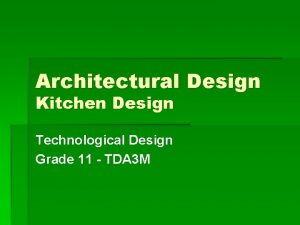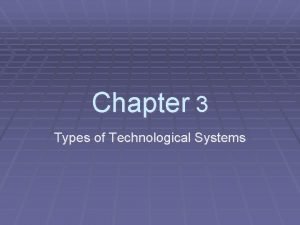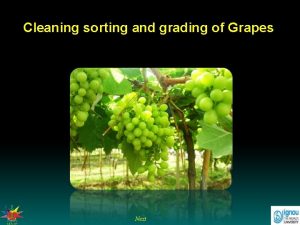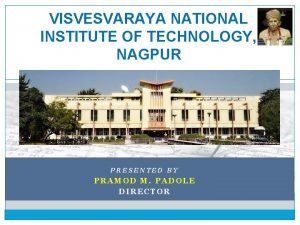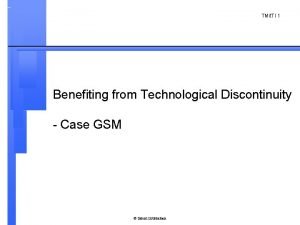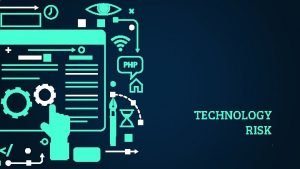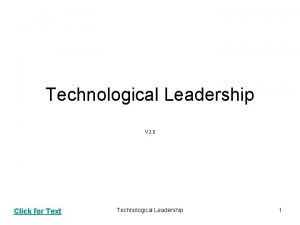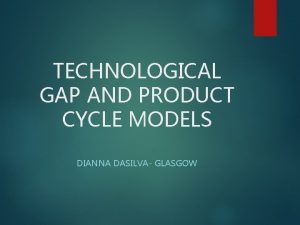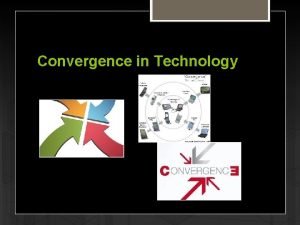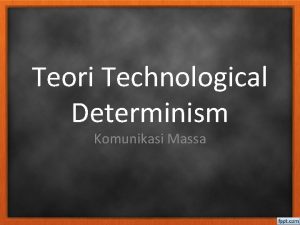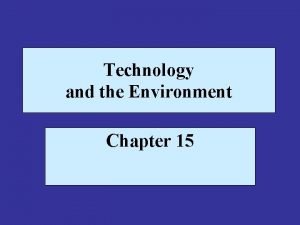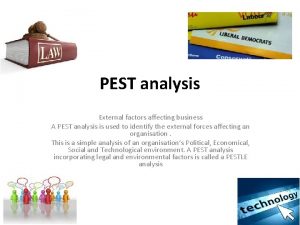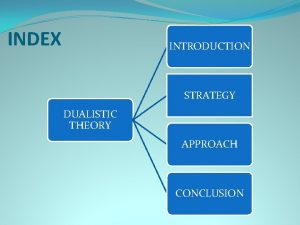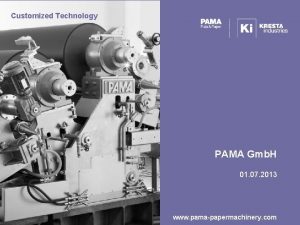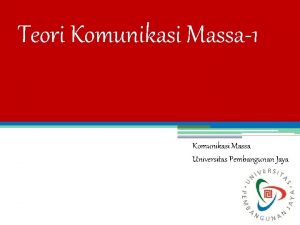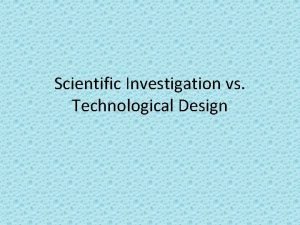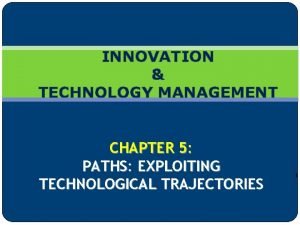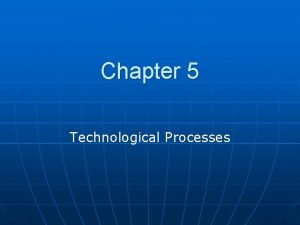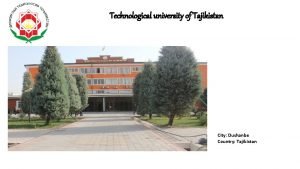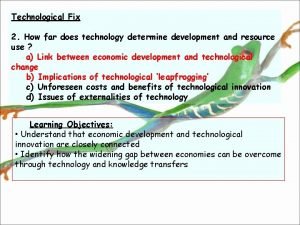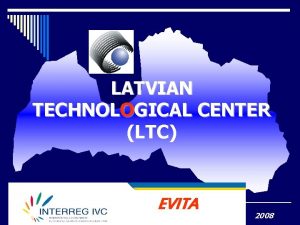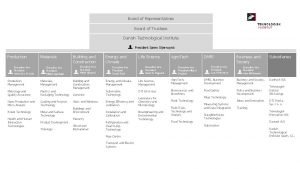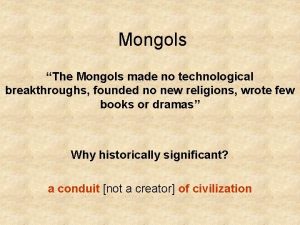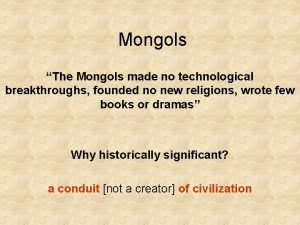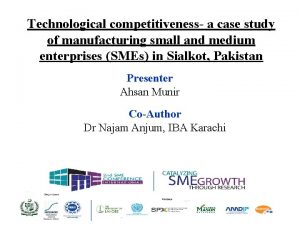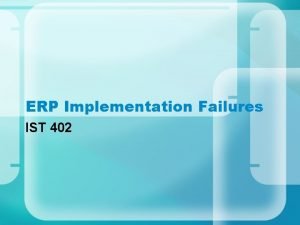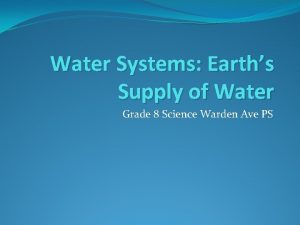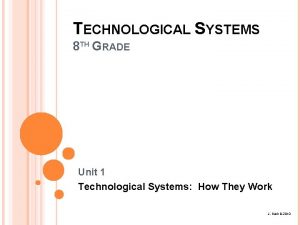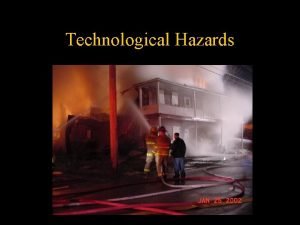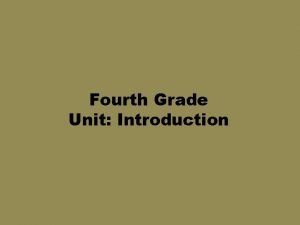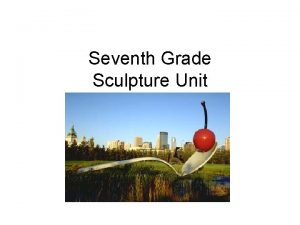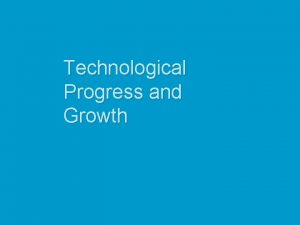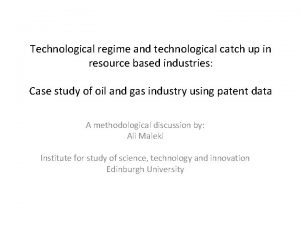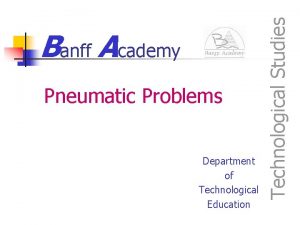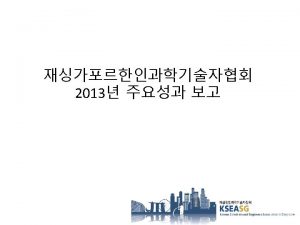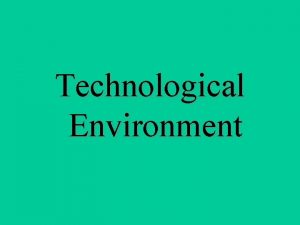TECHNOLOGICAL SYSTEMS 8 th Grade UNIT 3 TECHNOLOGICAL














































- Slides: 46

TECHNOLOGICAL SYSTEMS 8 th Grade UNIT 3: TECHNOLOGICAL SYSTEM INTERACTIONS

Hey, what’s the BIG idea? �Systems are usually connected to other systems, both internally and externally. A system may be thought of as containing subsystems and as being a subsystem of a larger system.

Hey, what’s the BIG idea? SOMERSET COUNTY SCHOOL SYSTEM MIDDLE SCHOOL ELEMENTARY HIGH SCHOOL JR. HIGH BERLIN BROTHERSVALLEY ELEMENTARY HIGH SCHOOL ROCKWOOD SHANKSVILLE ELEMENTARY JR. HIGH

Hey, what’s the BIG idea? SYSTEM SUBSYSTEM SUBSYSTEM SUBSYSTEM

¿Quién soy yo?

¿Quién soy yo? Me llamo Juan Valdez

¿Quién soy yo? Me llamo Juan Valdez

COFFEE MAKER: From Ground Beans to a Drink

How to Make Juan Valdez’s Best Brew

COFFEE MAKER: From Beans to Drink SMALL GROUP ACTIVITY 1. Think about the video you just watched 2. List • inputs • processes • output • feedback 3. Speculate (think with reasoning) if it is an open or closed-loop system 4. Identify the subsystems

COFFEEMAKER ACTIVITY Use this website to answer the questions on the handout. http: //www. howstuffworks. com/coffee-maker. htm

TECHNOLOGICAL SYSTEMS INTERACTIONS �Technological systems can be connected to one another �Systems can be connected, with the output of one system being the input to the next system �Sometimes the connection provides control of one system over another system

TECHNOLOGICAL SYSTEMS INTERACTIONS �Open Loop System: The system does not have a feedback path �Closed Loop System - System in which some or all of its output is used as its input. � Feedback? � An open-loop system has no feedback path and requires human intervention, while b. a closed-loop system uses feedback.

TECHNOLOGICAL SYSTEMS INTERACTIONS

TECHNOLOGICAL SYSTEMS INTERACTIONS Q: What were some of the subsystem connections/interactions found in the coffee maker?

TECHNOLOGICAL SYSTEMS INTERACTIONS Q: What were some of the subsystem connections/interactions found in the Rube Goldberg video?

TECHNOLOGICAL SYSTEMS INTERACTIONS Q: Create a Venn diagram to compare/contrast the connections / interactions / control of the music video and the coffee maker.

TECHNOLOGICAL SYSTEMS INTERACTIONS �A malfunction of any part of a system may affect the function and quality of the system.

TECHNOLOGICAL SYSTEMS INTERACTIONS Q: What are examples of malfunctions that could lead to the failure of the coffee maker as well as other familiar systems?

TECHNOLOGICAL SYSTEMS INTERACTIONS �Technological systems often interact with one another �Different technologies involve different sets of processes

TECHNOLOGICAL SYSTEMS INTERACTIONS � Technological systems often interact with one another � Different technologies involve different sets of processes EXAMPLES: � In health care systems, technological devices that monitor the heart, blood pressure, and breathing are dependant on other technological devices, software, and hardware in order to perform properly.

TECHNOLOGICAL SYSTEMS INTERACTIONS � Technological systems often interact with one another � Different technologies involve different sets of processes EXAMPLES: � In the home, heating systems are dependant upon a thermostat system.

TECHNOLOGICAL SYSTEMS INTERACTIONS �Systems thinking involves considering how every part relates to others.

TECHNOLOGICAL SYSTEMS INTERACTIONS: SYSTEM FAILURE �Systems thinking involves considering how every part relates to others. �Systems fail because they have faulty or poorly matched parts, are used in ways that exceed what was intended by the design, or were poorly designed to begin with.

TECHNOLOGICAL SYSTEMS INTERACTIONS: SYSTEM FAILURE � Systems thinking involves considering how every part relates to others. � Systems fail because they have faulty or poorly matched parts, are used in ways that exceed what was intended by the design, or were poorly designed to begin with. 3: 00

Hey, what’s the BIG idea? �Controls are mechanisms or activities that use information to cause systems to change.

Create a Roof Vent System Activity �Follow the directions in the design brief. �Use the provided materials to construct a bi-metal thermostat for a roof vent system.

Create a Roof Vent System Activity What is a bi-metal strip? Brass Steel

Create a Roof Vent System Activity What is a bi-metal strip? � Strip with two types of metal fused together � The two kinds of metal are usually brass and steel Brass Steel

Create a Roof Vent System Activity What is a bi-metal strip? � Strip with two types of metal fused together � The two kinds of metal are usually brass and steel �It bends in the direction of the metal that expands the slowest - this is the steel Brass Steel – expands slower so it bends in its direction

Create a Roof Vent System Activity How does a thermostat work? 1. When the temperature raises, the bimetal coil expands 2. Mercury in the glass vial changes its position because it is attached to the bimetal coil 3. The mercury then touches metal contacts in the glass vial and the electrical circuit activates the furnace or air conditioner

Basic Laboratory Safety Rules Do you know the safety rules for our hands-on activities in the laboratory and classroom? 1. Take a brief tour of the laboratory 2. Review the safety rules on the “Basic Safety Rules” handout 3. Take the basic safety rules quiz 28 points

Create a Roof Vent System Activity TIME TO BUILD! �Follow the directions in the design brief. �Use the provided materials to construct a bi-metal thermostat for a roof vent system.

THE BALANCING ACT

THE BALANCING ACT �Am I using analytical or judgmental system to maintain the balance of the item? �How did they determine when and where to move their hands in order to maintain the balance?

KINDS of DECISION SYSTEMS �Analytical System: A system that mathematically or scientifically make comparisons.

KINDS of DECISION SYSTEMS �Analytical System: A system that mathematically or scientifically make comparisons. �Judgmental Systems: A system that uses human opinions and values.

KINDS of DECISION SYSTEMS �Analytical System: A system that mathematically or scientifically make comparisons. �Judgmental Systems: A system that uses human opinions and values. �Judgment may be based on intuition—human ability to sense or know immediately without reasoning.

WHAT KIND of DECISION SYSTEM is USED? � Determining when to stop filling a glass with milk � Checking to see if there are too many people on the boat, over the legal limit � Weighing suitcases to see if they are light enough for the airplane � Identifying how long you should wait before eating again � Measuring a fish to see if it is a “keeper”

WHAT KIND of DECISION SYSTEM is USED? � Determining when to stop filling a glass with milk (judgmental) � Checking to see if there are too many people on the boat, over the legal limit (analytical) � Weighing suitcases to see if they are light enough for the airplane (analytical) � Identifying how long you should wait before eating again (judgmental) � Measuring a fish to see if it is a “keeper” (analytical)

JUDGMENT SYSTEMS � � � � � Explanation The teacher explains that: 1. Analytical and judgmental systems are two kinds of data comparison. a. Control systems are comprised of three main parts: 1) monitoring devices, 2) data-b. comparing devices, and 3) adjusting devices. The teacher explains that: 2. Monitoring devices are systems that collect information from all stages: input a. process, output, and feedback. The information can be precise (such as exact temperature) or general (there is a rattle coming from the left side of the engine). A variety of sensors are commonly used in technological systems to monitor the b. processes of a system. These include: thermal, optical, electronic, electromagnetic, and mechanical sensors. The teacher and students discuss various types of sensors found in their daily life and 3. classify them (thermal, optical, electronic, electromagnetic and mechanical). The teacher describes data-comparing devices. Information from monitoring devices is 4. analyzed and compared to the desired result. Example: An optical sensor (monitoring

� � � � � device) may detect where paper is located in an inkjet printer. Software will determine if the paper is in the proper location or if it needs to be advanced or rolled back. The comparing can be done by a device or by a person. The teacher describes adjusting devices used to make changes to a system based on 5. the results of the comparison. The teacher asks students to identify what the adjusting device is in the printer 6. example above. The teacher checks student understanding by asking them to work with a neighbor or 7. two to analyze and describe a fish-tank heater in terms of control systems. The teacher explains that a temperature sensor detects the current temperature of the 8. water. If the water is warm enough, a comparison will direct the heater to do nothing. If the temperature is too low, the comparison will trigger the heater to come on. The process will repeat, each time directing the heater to remain on until the comparison shows the water to be warm enough. The teacher states that a control system can be manual or automatic. The fish-tank 9. example is automatic because it requires no human intervention. A manual system requires that a person make the necessary adjustment to keep the system working properly. The teacher provides a description of how a cruise control system operates in a car. 10. This may include what it is used for and how it is activated and deactivated. The students complete a brief constructed response regarding the cruise control 11. system in an automobile. The teacher defines mechanical technology as the assembly of mechanical components 12. to produce, control, and transmit motion. The teacher elaborates on the attributes and applications of the mechanisms.

� � � � 14. Common components (levers, inclined planes, wedges, wheels and axles, pulleys, a. screws, gears, cams, linkages, shafts, couplings, cables, bearings, brakes, and clutches). Basic system design (sketching, symbols, and notation). b. Simple controls. (Complex systems may have layers of controls. Some controls c. operate particular parts of the system, and some control other controls. Even the most fully automatic systems require human control at some point. ) System performance evaluation (mechanical advantage and efficiency). d. Safety considerations. e. The teacher discusses science concepts and mathematical processes applied in 15. mechanical systems. Forcea. Motionb. Energyc. Workd. Powere. Efficiencyf. Gravityg. Friction h. The teacher identifies and describes 16. applications of mechanical technology in the designed world.

� � � � The teacher defines electrical technology as the technology of producing, storing, 17. controlling, transmitting, and getting work from electrical energy. (Example applications: power-plant generator, flashlight, electric motor in a can opener, doorbell, electric heater, and hair dryer). The teacher defines electronic technology as the technology of using small amounts 18. of electricity for controlling; detecting; and information collecting, storing, retrieving, processing, and communicating. (Example applications: thermostat for controlling temperature, a metal detector, videotape recorder, computer, pocket calculator, telephone, radio, and television). The teacher facilitates a discussion of applications of electrical technology in the 19. designed world, such as generators, electric motors, alarm systems, and automobile electrical systems. The teacher explains science concepts and mathematical concepts applied in electrical 20. technology including: Resistancea. Conductionb. Semiconductionc. Current (alternating and direct)d. Voltagee. Powerf. Circuitsg. Magnetismh. Ohm’s lawi. Ratio j.

� � � � j. The teacher describes how electric circuits provide a means of transferring and using 21. electrical energy to produce heat, light, sound, and chemical changes. The teacher facilitates a discussion of applications of electronic technology in the 22. designed world, such as computers, telephones, radio, and television. The teacher demonstrates how Ohm’s Law can be used to analyze and modify an 23. existing electrical circuit. The teacher reviews the following concepts related to controls: 24. Technological systems include input, processes, output, and, at times, feedback. a. An open-loop system has no feedback path and requires human intervention, while b. a closed-loop system uses feedback. Technological systems often interact with one another. c. A product, system, or environment developed for one setting may be applied to d. another setting. Controls are mechanisms or particular steps that people perform using information e. about the system that causes systems to change. Almost all control systems have inputs, outputs, and feedback. f. The essence of control is comparing information about what is happening to what g. people want to happen and then making appropriate adjustments. This procedure requires sensing information, processing it, and making changes. h. In almost all modern machines, microprocessors serve as centers of performance i. control.

�SEE UNIT 3 LESSON 3 OVERVIEW
 Kitchen design
Kitchen design Types of technological systems
Types of technological systems Unit 10, unit 10 review tests, unit 10 general test
Unit 10, unit 10 review tests, unit 10 general test Grade transmutation
Grade transmutation Jump rope rhymes boyfriend
Jump rope rhymes boyfriend Difference between grade a and grade aa eggs
Difference between grade a and grade aa eggs Grade a vs grade b milk
Grade a vs grade b milk Grading of grapes
Grading of grapes Meta - change morph
Meta - change morph Visvesvaraya technological university nagpur
Visvesvaraya technological university nagpur Technological discontinuity definition
Technological discontinuity definition Technology risk definition
Technology risk definition What is technological modelling
What is technological modelling Technological leader
Technological leader Technological gap model
Technological gap model Technological design
Technological design Political economic
Political economic Institute for prospective technological studies
Institute for prospective technological studies Technological convergence example
Technological convergence example Importance of technological innovation
Importance of technological innovation Slidetodoc.com
Slidetodoc.com Teori technological determinism
Teori technological determinism Technological dualism
Technological dualism Tesco political factors
Tesco political factors Technology forecasting definition
Technology forecasting definition Technological dualism
Technological dualism Five things we need to know about technological change
Five things we need to know about technological change Pama technological support
Pama technological support Ufa state petroleum technological university
Ufa state petroleum technological university Ascoulor
Ascoulor Contoh spiral of silence dalam kehidupan sehari-hari
Contoh spiral of silence dalam kehidupan sehari-hari Which is one limitation to technological design
Which is one limitation to technological design Technological design and scientific investigation
Technological design and scientific investigation 5 major technological trajectories
5 major technological trajectories 5 technological processes
5 technological processes Technological university of tajikistan
Technological university of tajikistan Technological fix definition
Technological fix definition Latvian technological center
Latvian technological center Danish technological university
Danish technological university Technological literacy definition
Technological literacy definition The mongols made no technological breakthroughs
The mongols made no technological breakthroughs Mongolian diet meme
Mongolian diet meme Technological competitiveness
Technological competitiveness Ist 402
Ist 402 Water systems grade 8
Water systems grade 8 Energy system grade 7
Energy system grade 7 Tariff calculation formula grade 11
Tariff calculation formula grade 11
